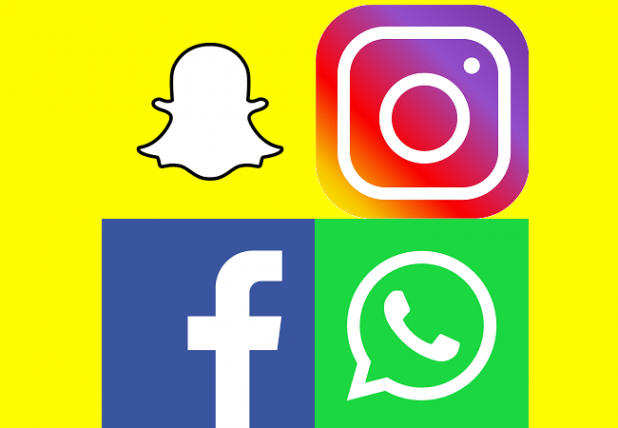Today’s marketplace is saturated with so many brands that getting your voice heard above all the noise is akin to completing a Herculean Labor. If that’s not bad enough, you also have just as many new businesses trying to make their own mark in the already cluttered environment we call the internet. Thankfully, social media is there to make things easier, even if it’s only a little. For example, when you want to make sure your audience knows about the sale you’re about to have, what do you do? You post about it on Facebook, Twitter, or one of the other social giants out there. What about when you’re releasing a brand new product? You guessed it, social media.
The point being that social media is there to bridge the gap between you and your audience so you can cultivate a relationship with them without having to worry too much about your competition. After all, they’re either following you or actively checking out what you have to offer, so you know for a fact that you already have their attention. Then again, if you’re posting on social media, so is your competition. What can you do then? What can you do to make sure that your posts, not your competition’s, are what they’re consuming and responding to? That’s where social media Stories come into play.
Social Media Stories for Marketing
Social media Stories were made popular by Snapchat back in 2013 as a way for their users to show their friends and family what they did throughout the day. In fact, they became so popular that Instagram outright copied the idea in 2016, followed by WhatsApp and Facebook in 2017. Today, it’s estimated that there are almost a billion accounts that post Stories daily on Snapchat, Instagram, WhatsApp and Facebook.
In action, a social Story might consist of a morning coffee break video, an afternoon lunch snap, and an evening comment of what’s on TV. That is to say, social Stories are just that: Stories pieced together picture by picture or video by video to show your followers something about your day… if you’re a person, that is. If you’re a brand, social media Stories present an opportunity to engage with your audience on a personal level. The best part? Stories disappear after 24 hours. You don’t have to put too much effort into their curation; all you have to do is get to the point and make it entertaining enough so your users stick it out until the end.
In this way, social Stories became a way for brands to deliver tailored messages to their users with certainty that they would be viewed at some point throughout their day—in bed, on the train, even on the toilet. The “story” element—the fact that content is pieced together in a format that creates some sort of timed continuity—also increases the likelihood that the entire Story will be watched. For instance, unlike normal social posts that pile up on a social timeline by date or popularity and essentially separate a brand’s messages and place it between other posts, Stories ensure that everything is delivered in a bundled package that can be consumed in one sitting.
And so we arrive at today’s main topic: how to use social media stories for business with the help of Snapchat, Instagram, Facebook and WhatsApp. In other words, we’re going to be talking about creating a social media Story strategy you can use to propel your business.
Snapchat Stories for Business
Seeing as how Snapchat was the first social platform to offer Stories, we’re going to cover Snapchat Stories for business first. Snapchat Stories are for you if you’re targeting a younger demographic, as 71% of users are under 34 years old. More specifically, 78% of 18- to 24-year-olds use Snapchat, and a sizeable majority of these users (71%) visit the platform multiple times per day. For you, this means that you should add personality to your Snaps and keep them short and sweet (Is anyone more
impatient than a typical young person?).
As for what you should be sending out, make sure that your first Snap has enough gusto to capture your users’ attention and keep them hooked until the end. Snapchat also has a Discover section where users can find you if you they’re looking for content that’s similar to what you’re putting out, and the option of getting sponsored geofilters based on your location, or Snap ads that capture the attention of your targeted users.
As for creating Snapchat Stories, it’s pretty simple. You just have to tap the Profile icon in the top-left corner to arrive at the Profile screen, and then tap ‘+Create New Story’ at the bottom. Here, you can choose the type of Story you want. Snapchat will then take over and show you what to do — that simple. As a side note, you can also save a Created Story in case you want to share it on other social channels
Instagram Stories for Business
After Snapchat, Instagram was the first social channel to take the initiative and include a Stories feature of their own in 2016. Today, about three years later, there are about 500 million daily active Stories users worldwide, up from 400 million in the middle of 2018. As you might expect, this means that many brands have already jumped at the chance to create their own Instagram Stories. For example, big brands like Adidas are regularly using Stories to showcase the production process behind their top sellers. This type of ‘behind the scenes’ content is great for brands who want to promote products and foster loyalty amongst their users.
As to what you can use Stories for, take a look at the following Instagram Story ideas for brands based on what the majority of stories out there are for:
- Product promotion (36%)
- Provide an inside look (22%)
- Influencer takeover (14%)
- Promote a live event (10%)
- Offer how-to content (5%)
- Deliver fan content (4%)
- Hold contests (2%)
- Other (7%)
As you can see, Instagram Stories best practices tell us that product promotion is the go-to for most brands. After all, while Snapchat and their Discover feature are wonderful for pushing content to be found, Instagram instead excels at pushing products and promoting sales strategies.
Like Snapchat, social media marketing with Instagram Stories is quite easy. To begin, you’ll have to either tap the camera icon ![]() in the top-left of your screen (or swipe right from anywhere in Feed) and take a picture, or upload one from your phone’s library by swiping up anywhere on the screen. Afterward, tap the draw icon
in the top-left of your screen (or swipe right from anywhere in Feed) and take a picture, or upload one from your phone’s library by swiping up anywhere on the screen. Afterward, tap the draw icon ![]() , text icon
, text icon ![]() or sticker icon
or sticker icon ![]() to draw, add text or a sticker to your photo or video. If you want to remove text or a sticker, drag and drop it on the trash icon
to draw, add text or a sticker to your photo or video. If you want to remove text or a sticker, drag and drop it on the trash icon ![]() at the bottom of the screen. Once you’ve edited to your heart’s content, share it by tapping on Your Story in the bottom left.
at the bottom of the screen. Once you’ve edited to your heart’s content, share it by tapping on Your Story in the bottom left.
Facebook Stories for Business
First was Snapchat, then was Instagram, and after that came Facebook in the beginning of 2017, ready to launch their own Stories section within its own app of nearly 2.2 billion monthly active users.
Explaining this, Mark Zuckerberg last year said:
Another important shift that we’re seeing across the industry is the growth of Stories. We expect Stories are on track to overtake posts in feeds as the most common way that people share across all social apps. That’s because Stories is a better format for sharing multiple quick video clips throughout your day. The growth of Stories will have an impact on how we build products and think about our business, including WhatsApp and Instagram, which are the #1 and #2 most-used Stories products in the world.
Knowing this, Facebook Stories for business functions like a hybrid of Snapchat and Instagram in that most who use Snapchat Stories are trying to get found, those who use Instagram Stories want to sell products, and those who use Facebook Stories want a little of both. That is to say, instead of putting out ads (or apart from putting out ads), many brands are choosing to promote their business or products by sharing details in a story, and then guiding users to the posts featuring the promotional material.
As before, creating a Facebook Story will be a breeze. Up first, go to your News Feed to arrive at the Stories section in the top right. Once there, click ‘+ Add to Your Story’ and take whatever action you want—type an update or click Photo/Video to upload a photo or video. Seeing as how you’re reading a post on creating positive social media Stories for business, you also want to make sure that your entire audience can see your Story. To make this happen, click on the audience selector to choose who can see your story (e.g. ![]() Public or
Public or ![]() Friends), and click Share to let everyone see what you’ve created.
Friends), and click Share to let everyone see what you’ve created.
WhatsApp Status for Business
And then there’s WhatsApp Status, which was actually released before Facebook Stories and functions like other social Stories, i.e. it allows you to share text, photos, videos and animated GIFs with your followers that disappear after 24 hours. The thing about WhatsApp and their Status feature is that, though many people are WhatsApp users around the world, this isn’t the case in the US, where the other social platforms dominate. Something else that makes this one different is that WhatsApp is, in effect, a messaging platform. Despite this, hundreds of brands have already started using their Status feature in a way that’s similar to those who use Instagram Stories to gain feedback from their users, i.e. they’re using features like the ability to poll their users.
If you thought that creating a WhatsApp Status would be just as easy as creating social Stories, you are correct. Like WhatsApp explains in their own FAQ section, it can be done in three steps:
- Go to the Status screen.
- Choose between:
- Camera to take a new photo or record a new video, or choose an existing one from the picker. You can also add a caption and personalize your status updates by adding emoji, text and free handed drawings to your photos and videos.
- Text to compose a written status update. You can write what you’d like to share, pick a background color and a font of your choice.
- Tap Send.
Final Thoughts
Social Stories—and Statuses— are a relatively new feature social media platforms like Snapchat, Instagram, Facebook and WhatsApp are offering so their users can disseminate information in a nice, bundled package that’s both engaging and entertaining. By piecing together different content types into one and adding a timeline, brands are able to take their own users through a journey that’s more coherent than any collection of posts can achieve.
Best of luck creating your own!






